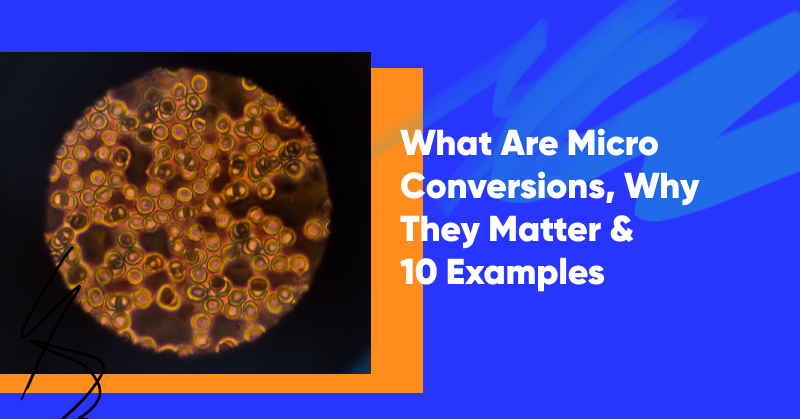The customer journey from first learning about a brand to eventually making a purchase often has many steps. These can include clicking through to a landing page, browsing a category page, and completing an email sign-up form. None of these steps directly lead to the primary goal (making a sale), but they do indicate that a potential customer has a strong interest in a brand.
To understand how your customers are moving through your sales funnel, it’s crucial to track micro conversions. They provide insight into where your buyer journey has friction points and where you can better optimize it.
In this article, we’ll define what a micro conversion is and then take a look at 10 examples of micro conversions.
Let’s get started!
What is a micro conversion?
In digital marketing, we break the desirable actions you want your potential customers to complete into two categories: primary goals and secondary actions.
If your primary conversion goal is selling a product to a customer, then making a sale counts as a “macro conversion.” All the other small steps leading up to the purchase are micro conversions.
This means that instead of evaluating your website using just one conversion rate, you consider a wider range of user behavior in order to track micro conversions.
A strong micro conversion rate is a good indicator of the effectiveness of your funnel, since this shows that lots of your potential customers are completing your micro goals throughout the purchase process.
Why is tracking micro conversions important?
You want to track micro conversions because micro and macro conversions are linked: micro conversions lead to potential future macro conversions. If you want to generate more sales, it makes a lot of sense to start by looking at ways to boost your micro conversions.
Here are some of the benefits of tracking micro conversions:
- You’ll gain insight into both what you’re doing right and what’s not working.
- By providing a broader look at how customers interact with a website, micro conversions can help you see the bigger picture and figure out which areas of your websites to optimize.
- Tracking micro conversions allows you to identify the leads that are moving toward a macro conversion and provide focused, tailored messaging for them.
- You may discover a stage of the customer journey where few users are converting on your micro goals (i.e. a bottleneck in your conversion funnel) which gives you an opportunity to find a solution.
- Tracking micro conversions can help you measure the interest that your users have in different offers.
As a general rule, micro conversions are important for any brand that is interested in improving their website performance using conversion rate optimization.
10 examples of micro conversions
The 10 common micro conversions we’re about to cover can help you make sure you’re hitting your sales process milestones. Let’s see what they are…
1. Signing up for a newsletter
One of the most important micro conversions is the email sign-up.
This action ensures that a new visitor becomes a new lead that you can keep in touch with. When users get in the habit of receiving a weekly or monthly newsletter from your brand, they’ll be more likely to make a purchase in the future.
Conversion optimization tip: It’s generally a good idea to offer users something in exchange for signing up for email marketing messages (like a discount code or free shipping), since this will increase your micro conversion rate.
2. Downloading an ebook
When a customer downloads an ebook, it’s a strong sign that they’re very interested in your niche. This means that you can identify them as valuable leads and nurture them in the future.
Conversion optimization tip: You can encourage users to join your email marketing list by using your ebook as a lead magnet on a blog post.
3. Clicking on a product recommendation
If a user takes the step of clicking on product recommendations, this shows that they’re actively looking for options on your site.
This is one example of a micro conversion that shows that a user is very close to a macro conversion (making a purchase).
Conversion optimization tip: If you find that your users are rarely clicking on your product recommendations, it’s a good idea to personalize your recommendations using a conversion rate optimization tool like OptiMonk.
4. Adding a product to their wish list
A wish list is a way for customers to save items that they’re interested in for future visits. This type of micro conversion indicates that a potential customer has found an item they’re really interested in. Generally, customers can add items to their wish list from the product page.
Conversion optimization tip: You can transform a micro conversion like this into a macro conversion by sending follow-up emails to customers who have added items to their wish lists.
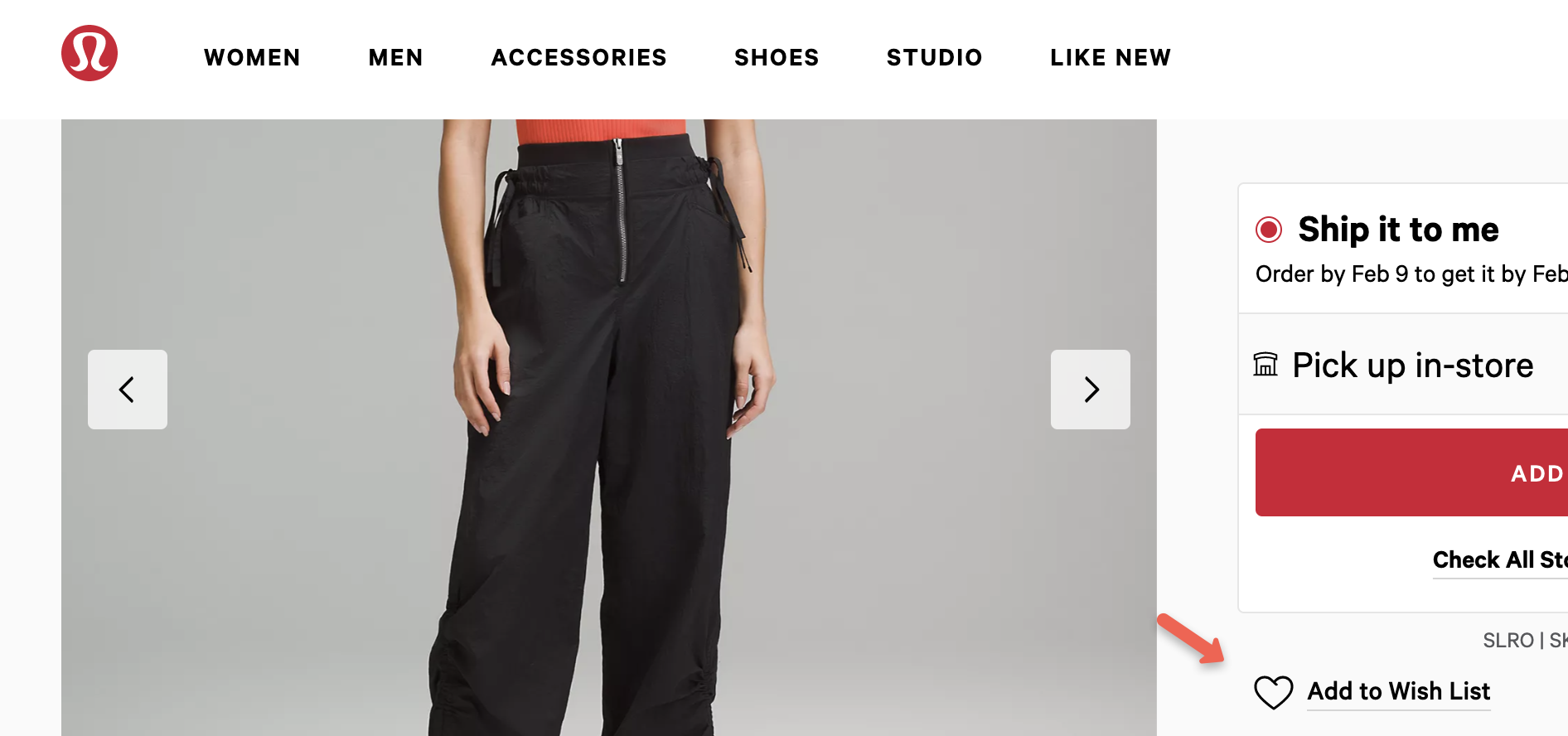
5. Adding a product to the cart
In terms of buying intent, the next level of micro conversions is adding an item to their cart. This shows that someone is ready to make a purchase and you’re close to accomplishing one of your macro goals.
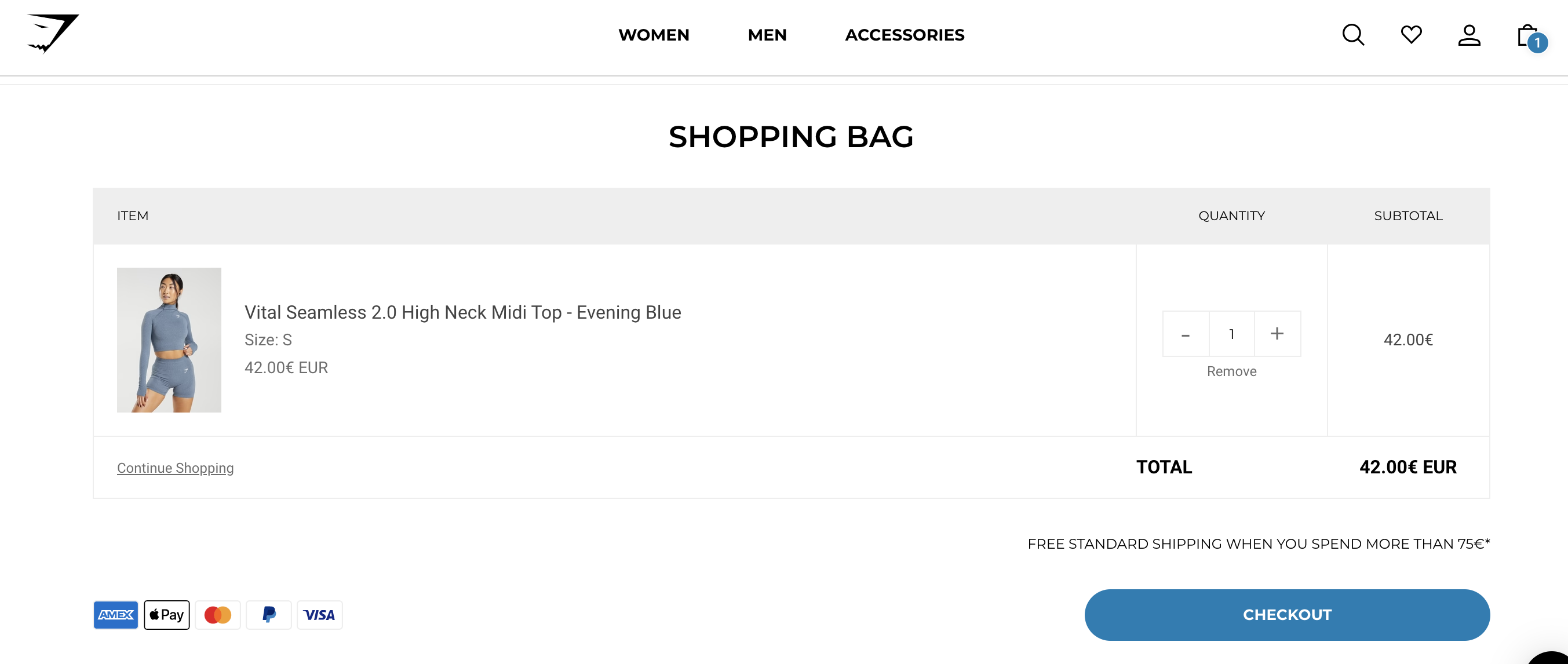
Conversion optimization tip: Do you find that lots of customers add items to their cart but don’t complete their purchase? You’re not alone. In ecommerce, the average cart abandonment rate is almost 67%.
This means that this part of your sales funnel is a great place to perform conversion rate optimization. One of the best ways to do that is by using a cart abandonment popup to stop your customers from leaving without completing their purchase.
Below are some examples of cart abandonment popups that you can set up in just a few minutes:
6. Watching a video
One of the most popular UX improvements you can make to your site is adding video. And once you do, it’s important to track how many users watch your videos.
If you’re spending the time and effort to create video content, you want to make sure it’s bringing you good results.
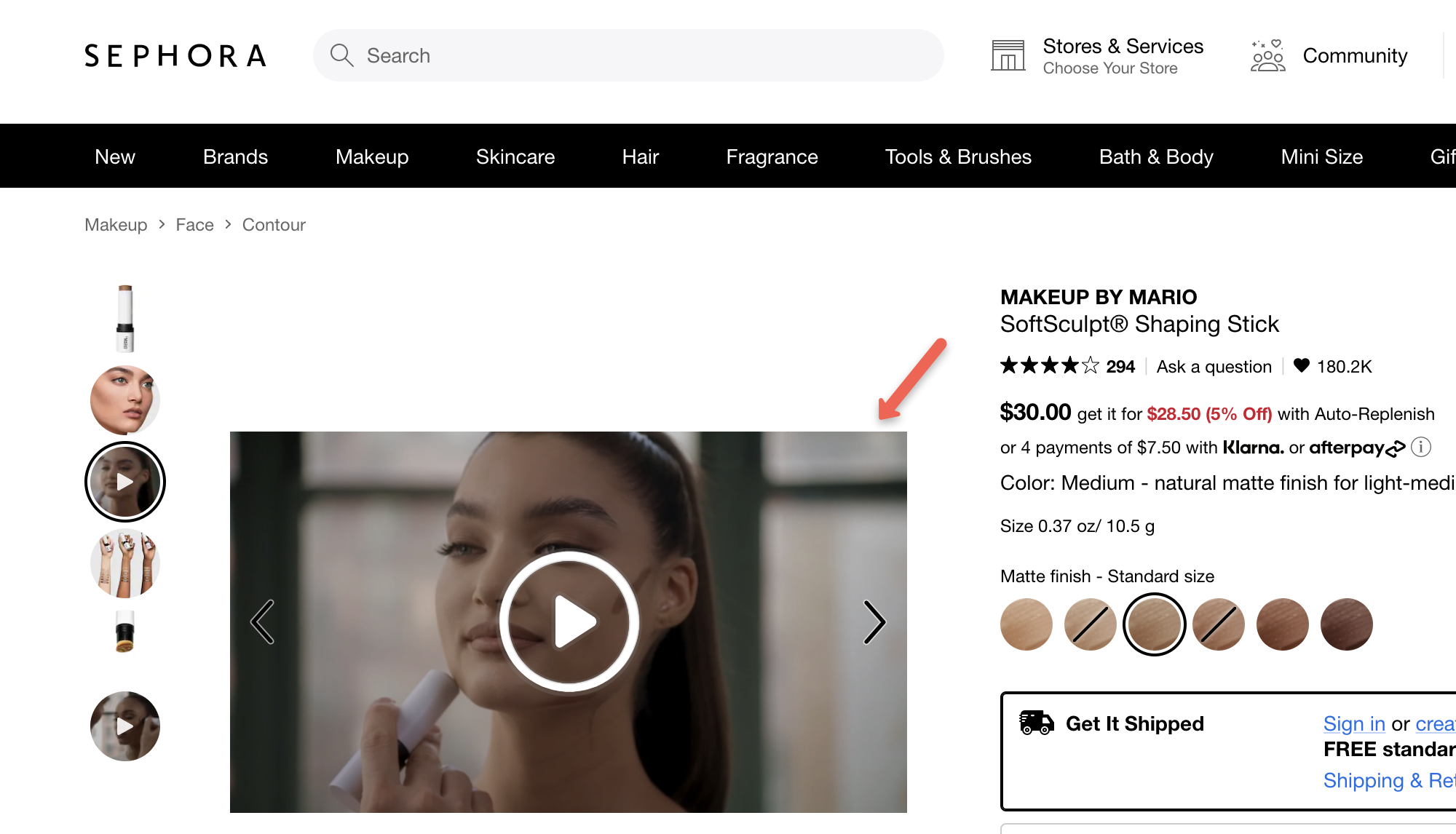
7. Commenting on a post
Comments show that a user is highly engaged and interested in the content you’re publishing on your site. The more comments you get, the more likely you’ll see a steady stream of users moving toward your macro goals.
Conversion optimization tip: You can encourage your website visitors to comment on your articles and blog posts by adding a call-to-action like “Tell us what you think in the comment section.”
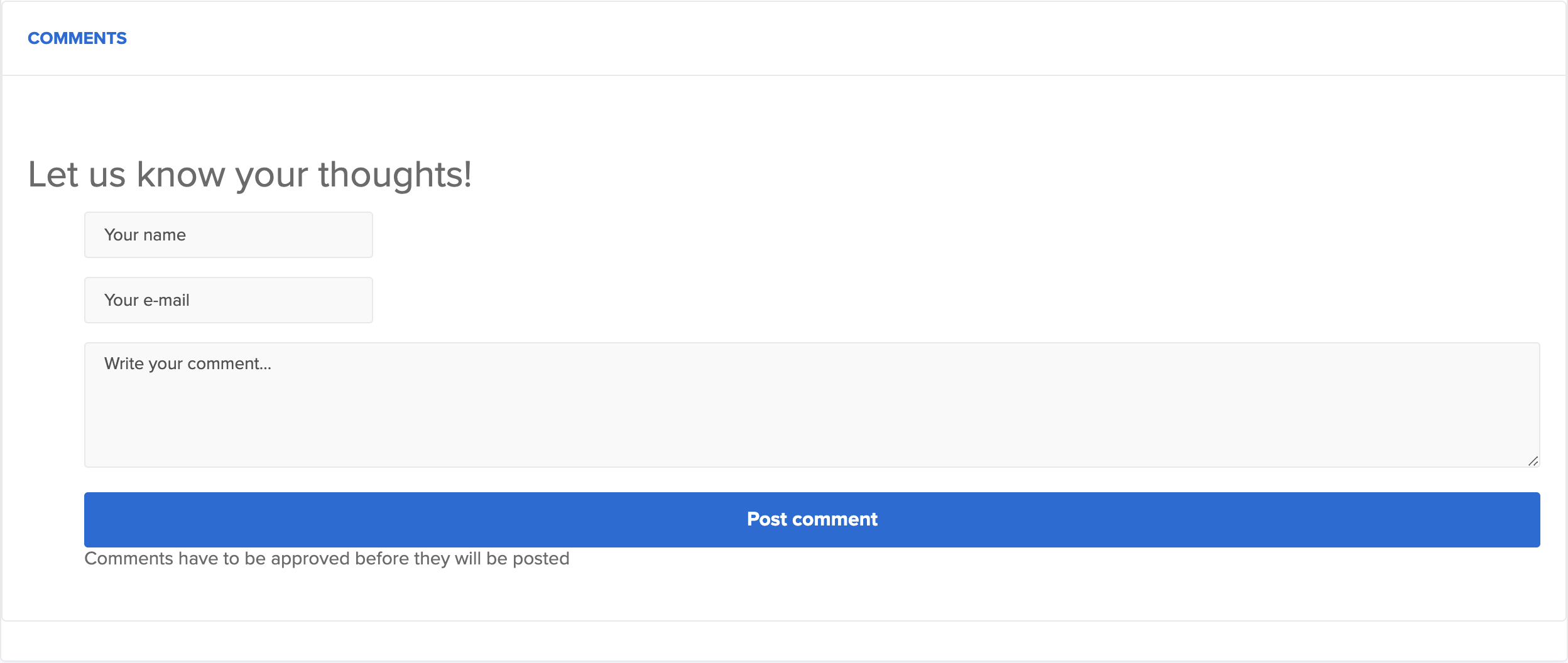
8. Viewing multiple pages
The more time a potential customer spends on your site, the more interested you can assume they are in your products. As a user clicks through your site, they’re learning more and more about your brand and what differentiates you from your competitors.
Demonstrating this level of interest can be considered a micro conversion.
Conversion optimization tip: You can track the pages that each website visitor browses in order to personalize your marketing messages in the future.
9. Entering payment information
Another important micro conversion on the way to making a purchase occurs when a customer enters their payment information as part of your checkout process.
This type of micro conversion shows you two things:
- The customer trusts your site with their financial information, and
- They’re able to make a purchase using one of your payment methods.
10. Creating an account
A lead who takes the time to create an account on your site is a great candidate for becoming a long-term customer. If someone is only interested in making a one-time purchase, it’s very unlikely that they’ll bother creating an account.
You should definitely track and nurture the leads who convert on any type of “create an account” micro goal, since cultivating loyal customers who make many purchases is more cost-effective than trying to constantly bring in new leads.
How to track micro conversions?
Micro conversion tracking using Google Analytics is a common practice, and it can be easily accomplished by following a few simple steps.
To add micro conversions in Google Analytics, follow these steps:
- Sign in to your GA account and navigate to the ‘Admin’ section.
- In the ‘View’ column, locate and click on ‘Goals’.
- To add a new goal, click on the red ‘+ NEW GOAL’ button. Please note that if the button is not visible, it means that you have already reached the maximum limit of 20 goals.
- Google Analytics offers various goal templates that can be used for different micro conversions such as account creation, social media content sharing, or video playback. It’s recommended to utilize these pre-built templates. However, if none of the templates align with your specific micro conversion, you can create a custom goal by selecting the ‘Custom’ option.
- Give your goal a descriptive name and choose the appropriate tracking method based on your micro conversion requirements. This can include tracking page visits, time spent on a page, minimum page requirements, button clicks, or video plays. Once you have made your selection, click on ‘Continue’.
- After successfully creating your goal, it will be displayed in the ‘Goals’ chart for reference.
- To monitor the progress of your micro conversions, simply access the ‘Conversions’ tab and navigate to ‘Goals’.
However, keep in mind that this won’t be possible for all types of micro conversions, since Google Analytics has trouble keeping track of lagging indicators. Luckily, you can use a website personalization tool like OptiMonk to track and measure micro conversions that are lagging indicators (i.e. that take some time to affect revenue).
FAQ
What is a macro conversion?
Macro conversion refers to the ultimate goal of your website. For an ecommerce website, your primary macro conversion is probably making a purchase, while SaaS companies are more interested in generating subscriptions.
Depending on what macro conversion you’re trying to achieve, you’ll need to focus on different micro conversions. For example, a SaaS company will chase after free trial signups in order to encourage their visitors to eventually macro convert by subscribing.
How do micro and macro conversions relate to each other?
Macro and micro conversions are both important measures of the success of an online business. Low micro conversion rates often indicate a lower likelihood of macro conversions. By tracking both types of conversions, you can identify areas for improvement in your ecommerce site performance and user journey.
Wrapping up
Micro and macro conversions are both important measures of the success of an online business. Often, they tell the same story: a site that’s experiencing low micro conversion rates will be unlikely to see many macro conversions.
When you track micro conversions alongside macro conversions, however, you’ll be able to understand exactly where you need to improve your site performance. By understanding where in the user journey your leads tend to bounce, you can improve those areas.
And there’s no better way to optimize your conversions than using website personalization software like OptiMonk to provide a smooth, tailored user journey. If you’d like to implement the conversion optimization tips we’ve covered today, create a free OptiMonk account and get your new campaigns up and running in minutes!
